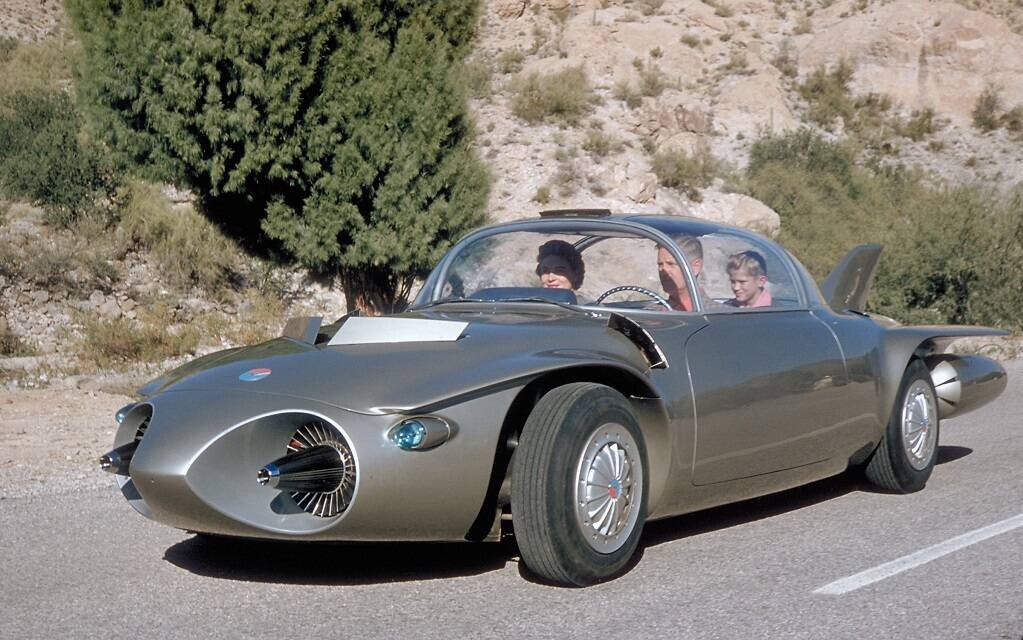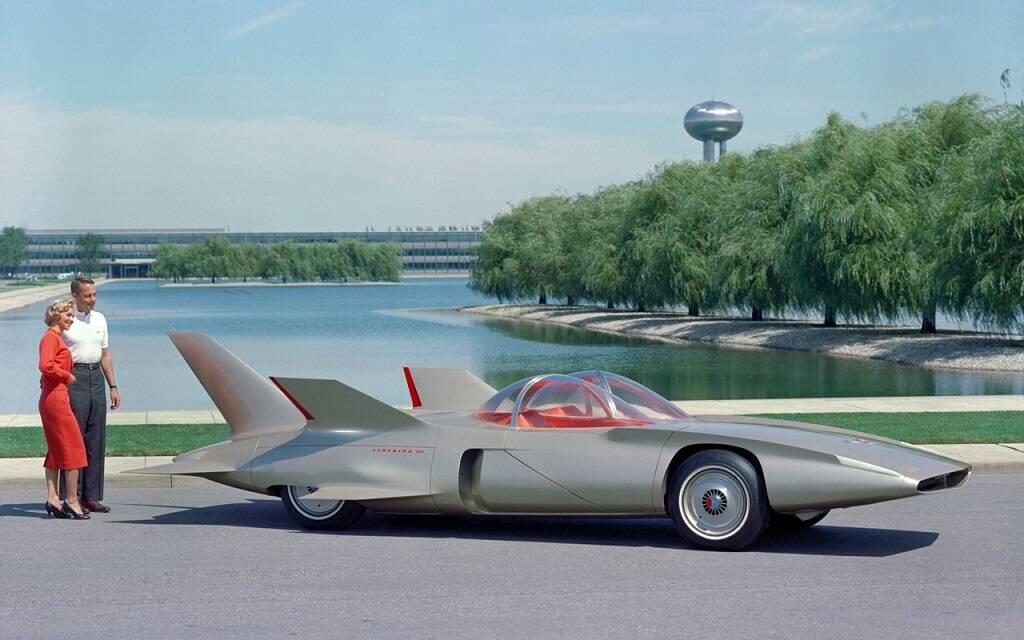After the Second World War, the American automotive industry was obsessed with aeronautics: fins, decorations, V8 names…
This interest is not only aesthetic. Manufacturers are also designing a new type of engine for their cars: the turbine.
GM vs Chrysler
In the 1950s, several car manufacturers around the world became interested in road applications of the turbine. These include Renault, Fiat and Rover in Europe as well as General Motors and Chrysler in America.
It is the latter who will win the title of technological (and media) leader in this field with a development program of nearly 30 years which will culminate in the manufacture of 50 copies of the Chrysler Turbine. On the other hand, it is GM who will win in the field of style with concepts highly inspired by aviation.
1954: Firebird I
Photo: General Motors
At first, GM mainly targeted heavyweights with its program. But Harley Earl, GM’s legendary design boss, also sees the idea of making the world dream with futuristic technologies in Motorama (shows organized by GM between 1949 and 1961).
It was he who initiated the construction of a turbine concept for the 1954 Motorama. He entrusted the style to Bob McLean, who imagined an airplane on wheels. There is a small retractable headlight at the front and airbrakes at the rear. Bill Turunen, who has been in charge of turbine development for GM since 1949, delivers an engine originally designed for trucks. Internally baptized GT-302 (or Whirlfire for the general public), it produces 400 horsepower but proves to be very energy-intensive (only 4 to 6 miles per gallon of consumption) and offers too long a response time.
Regardless, it was decided to beat the speed record for a turbine-powered car, then held by Rover, on the GM test circuit in Arizona. However, Charles McCuen, Turunen’s boss, wants to first test on the Milford track in Michigan. Disconcerted by the atypical driving of a turbine car, McCuen loses control, leaves the track and finds himself on the “roof” (well, the bubble). The Firebird badly damaged and McCuen seriously injured. Luckily, he’ll pull through and the concept will be rebuilt in time for Motorama. There is obviously no longer any question of a record attempt.
1956: Firebird II

Photo: General Motors
Earl immediately wanted to build a second turbine-powered prototype for the 1955 Motorama. But the project proved to be a little too ambitious and was finally unveiled in 1956.
He wants to show “the family sedan of the future”, this time again designed by Bob McLean. It calls for a titanium body, a fully transparent top, aeronautical instrumentation, 4 individual seats and an automatic guidance system. Nothing less!
Strangely, it is the titanium body that will cause the most problems to manufacture. This is why it was decided to build a second prototype, rolling, with a fiberglass body, the titanium model being used only for the show. Technically, the Firebird II receives a new model GT-304 turbine with heat recovery (200 horsepower) offering better consumption and better response time, a 4-speed automatic transmission (which replaces the 2-speed planetary system of the Firebird I), 4 disc brakes and a hydropneumatic suspension similar to that developed by Citroën for its DS.
As for the guidance system (not functional), it is supposed to follow electric wires installed in the highways of the future. It should be noted that another concept, baptized XP-500, will be derived from Firebird II with a simplified design to show the advances of GM in the field of the engines with free pistons.
1959: Firebird III

Photo: General Motors
GM will not organize Motorama in 1957 nor in 1958. For 1959, the star will be the Firebird III. Its style, directed by Norm James and Stephan Habsburg, is inspired by the missiles of the Nike family (nothing to do with the shoes) which includes a series of main fins and a series of secondary fins. The body is constructed from fiberglass. No room for luggage in this coupé because all the space is occupied by technology.
The turbine has further evolved. The GT-305 model offers 225 horsepower and 50% less fuel consumption compared to the GT-304. It is mated to a 4-speed automatic transmission. There is no longer a steering wheel but, as in an airplane, a joystick which takes care of the steering, acceleration and braking. No less than 3 computers are installed to control this system which can, if necessary, correct pilot errors. The brakes are drum type (with sophisticated cooling) and are complemented by anti-lock and airbrakes. The suspension remains of the hydropneumatic type.
The 2 two occupants are entitled to air conditioning. A small 10 horsepower 2-cylinder engine is added to power all of these subsystems. The car will be tested on the Milford test track and will be the subject of a film which will be shown at Motorama (you can see it here).
1964: Firebird IV

Photo: General Motors
This concept was presented at the New York World’s Fair in 1964. The connection with the first three Firebirds is relatively tenuous. It is indeed supposed to receive a turbine but, unlike the others, it is not rolling and the style is much less inspired by aeronautics.
On the other hand, we find the technology of electronic guidance on the highway. In 1969, it will be repainted to be presented again, this time under the name of Buick Century Cruiser.
